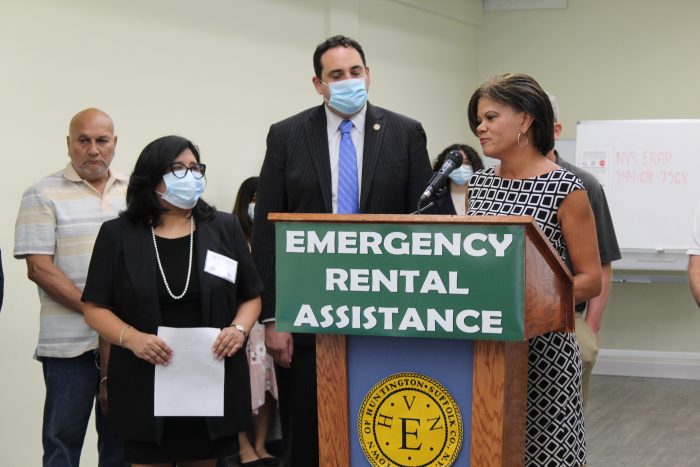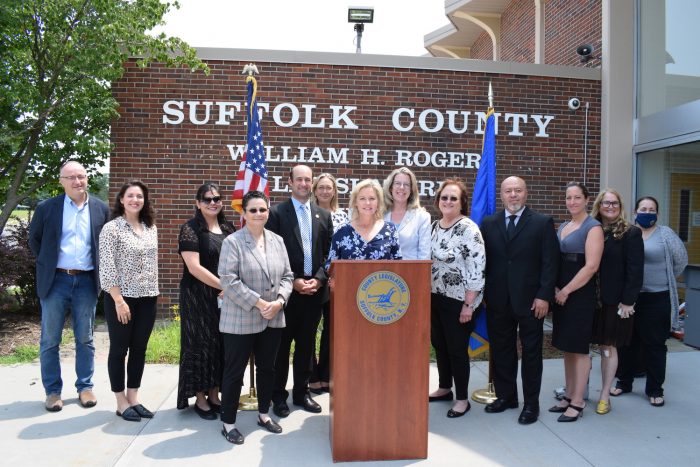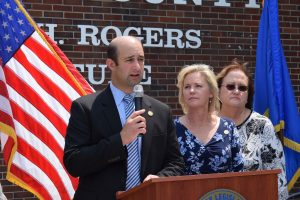I honestly don’t remember a whole lot from elementary school, but I still remember September 11, 2001.
I remember it was a beautiful, warm day. There was not one cloud in the sky and we were all so excited that we would be able to play outside for recess and gym class.
At just 8 years old, I was in the fourth grade at East Street Elementary School in Hicksville — just a little over an hour away from one of my favorite places, Manhattan.
My dad was a truck driver back then, and he was always in the city making deliveries. He’d take me and my brother out there every other weekend and show us his favorite spots. One of them was the World Trade Center.
“Isn’t it amazing?” I remember him saying, “They look like Legos from far away.”
Back at school that Tuesday morning, I remember simply going about our day. Things eventually got weird, though. My principal came to speak to my teacher out at around 10 a.m. outside of the classroom, and I remember her face when she came back inside. She was white as a ghost.
Throughout the day, my classmates started to get pulled out one by one. I remember being mad that I couldn’t go home, like everyone else. I remember being jealous but, looking back, they were being taken out because their fathers and uncles were first responders and their families were scared.
When our parents picked us up later in the afternoon, I remember everyone just feeling so sad. The sky wasn’t that pretty blue anymore — it felt like a dark cloud washed over us, which on reflection might have been smoke heading east. Everyone’s energy was low. The news was the only thing we watched for hours.
My dad made it home later that night and he was shell shocked. From his truck route in Queens, he said he saw the smoke. He was on the parkway, sitting in bumper-to-bumper traffic, fleeing with the rest of the people trying to evacuate Manhattan.
My family was lucky — we didn’t lose anyone that day, and being so young I don’t know if I was able to recognize what happened until much later in life.
I knew it was a sad day. I knew that something bad happened. I knew that I had to wear red, white and blue on Sept. 12 and that a lot of people were missing and dead.
But when I became a journalist, I started to talk to more and more people who were impacted on the anniversaries of the attacks. Every year since the age of 8, it began to become more real to me.
After college, I met my best friend, Nicole, who’s aunt worked in the first tower. She died on impact when the plane crashed through her office.
Hearing these stories opened my eyes more. I grew up with 9/11 and felt it firsthand. But growing up, I started to learn more about the actual people whose lives were lost that day. I heard their stories and they eventually became real persons to me — not just numbers in this crazy story.
It’s amazing to think that 20 years have passed since the events which took place that horrible day. It’s amazing to see what has happened since then —wars, recessions, other bombings and a pandemic. And it’s amazing to believe that families, like my friend Nicole’s, have been without their loved ones for two decades.
No matter what age you were when the events happened — or even if you hadn’t been born yet — I think the anniversary of 9/11 should remind all of us to hug our families a little harder. Tell them you love them, and never forget the thousands of people who were impacted that day.
Julianne Mosher is the editor of the Port Times Record, Village Beacon Record and Times of Middle Country.

















































